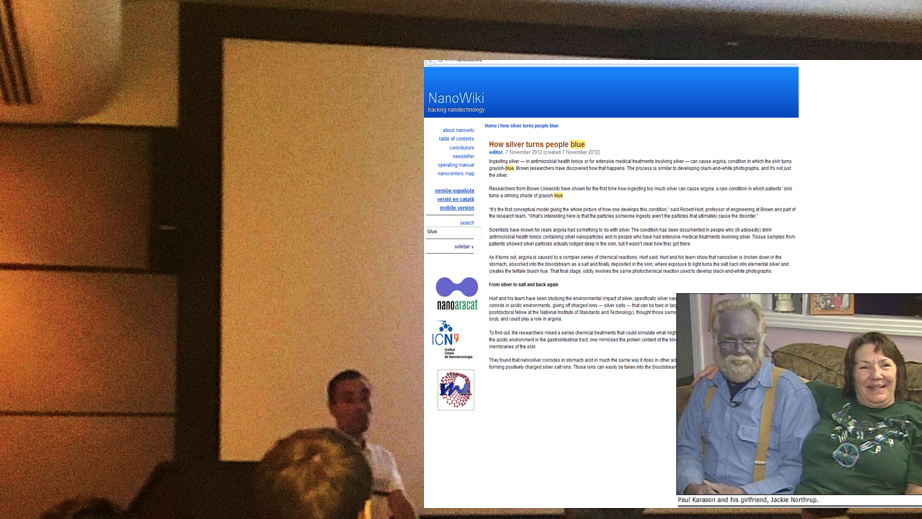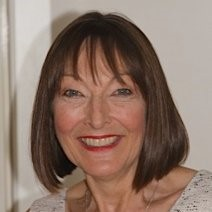NanoFASE Scientists share knowledge in Nano-medicine and Characterisation workshop - Institute of Physics, London, July 2018
The contributions of nanomaterials to medicine, and the needed role played by their characterisation were discussed at a workshop held in London on 10 July 2018 and organised by the Institute of Physics (Materials and Characterisation Group). NanoFASE work package leader Dr Alison Crossley co-organised and chaired the meeting which was attended by 25 stakeholders including invited speaker Dr Eudald Casals, co-founder of NanoFASE partner AppliedNanoparticles S.L. (AppNano). As a service to the Nano community Alison reports on the talks and respective speakers:
The meeting commenced with a success story in nano-medicine. Kevin Lorimer, a Development Programme Manager from Endomag, Cambridge, UK described how the company have translated a nano-based medical product to the international market. Using their expertise in magnetic sensing and nanotechnology, Endomag have developed a minimally invasive surgical guidance system which allows surgeons to locate early-stage breast cancers, that cannot be felt, with greater precision. They are currently working on the next generation of magnetic materials and sensing technologies.
The next talk was given by Dr Theodora Stewart, Kings College London, UK. Theodora is the lead scientist and manager of the new London Metallomics Facility (LMF) which is developing correlative metal bio-imaging workflows to advance our understanding of the roles and functions of metals in biology. Her research interests lie at the interface of biology, chemistry and physics, with a specific focus on developing analytical techniques and workflows to quantify temporal dynamics of intracellular metal species, their sub-cellular localisation, and identification of key biomolecules involved in their binding and transport. Theodora's work offers minimal disruption to the system of study through the use of both elemental mass spectrometry and synchrotron x-ray spectroscopy based bio-imaging techniques.
Solving particle metrology challenges to deliver better medicines was the subject of the talk given by Dr Caterina Minelli, National Physical Laboratory, UK. At NPL Caterina leads the development of metrology for particle technologies and in support of medicine manufacturing. Caterina described how NPL had been working to improve the accuracy of characterisation methods such as X-ray Photoelectron Spectroscopy (XPS) by refinement of protocols including sample preparation and modelling; this technique has proved to be particularly effective at measuring the thickness of nanoparticle coatings.
Dr Eudald Casals, Vall d’Hebron Research Institute (VHIR), Spain demonstrated the international outlook of the workshop with a talk entitled "Nanoparticles at work in complex biological matrices". Currently, he is senior researcher at VHIR, a public reference hospital research centre in Barcelona. Beyond its impact in the scientific community, his work has been successfully translated into commercial products (BioGAS+), through the creation of a spin-off company (AppliedNanoparticles S.L.) of which he is co-founder and partner. Antibiotic resistance is an important issue to be addressed for public health and characterisation of nanoparticles is key to progressing this. Eudald stressed that there is nothing new about nanoparticles which have always existed. He stated that the earliest fires would have created carbon nanotubes and that nanoparticles are produced in many natural ways from candle burning to volcanos. It is only now when we can "see" them that we are learning how to control and use them. He also discussed the reactivity of nanoparticles in physiological environments and the formation of protein coatings (corona) which had been described In the 1960s and then known as the Vroman effect.
Eudald described how nanoparticle effects are strongly influenced by characteristics of the exposure media. He illustrated this with the condition argyria, a skin pigmentation condition caused by overdosing on colloidal silver (see image). Silver nanoparticles in the stomach are dissolved and the Ag+ ions with the high HCl content of the stomach form AgCl2- . This is soluble and is transported through the body with some arriving at the skin where exposure to UV light reduces the ions back to metallic silver yielding the characteristic blue colour to the skin. In this link you can find the full story and the link to the ACS Nano paper.

Dr Eudald Casals, Vall d’Hebron Research Institute (VHIR), Spain with the image of "Blue man" – a person suffering from argyria (this condition famously figured in the 19th century novel "Poor Miss Finch" by William Wilkie Collins)
Lucien Roach, the next speaker, is a PhD student at the University of Leeds, UK whose research is centred on the Synthesis and Shape Control of Gold Nanorods for the Treatment of Cancer. He is a member of the Molecular and Nanoscale Physics research group under the supervision of Professor Stephen Evans. He talked about the synthesis and characterisation of gold nanomaterials and the preparation and functionalisation of such materials for application in medical techniques such as photothermal therapy and photoacoustic imaging. Lucien was the IOP Materials and Characterisation Group poster prize winner at the recent RSC-NPL Symposium on Nanoparticle concentration – critical needs and state-of-the-art measurement held on 24 April 2018 at Burlington House, London.
Dr Helen Townley from Oxford University, UK then described her progress in developing new nanoparticle therapies for paediatric cancers. Helen is a University Research lecturer and the William Dodd research fellow in the Nuffield department of Women’s and Reproductive Health, Oxford University, and a Senior Visiting Fellow in the Department of Engineering. Helen’s research writing centres on the use of nanoparticle therapies and natural product applications in paediatric oncology. Studies into the field are underrepresented in cancer research programmes, possibly due to the relatively low rate of onset giving childhood cancer orphan disease status (just 12,060 new cases were diagnosed in children aged 0–14 years in the US in 2012). However, cancer is still the leading cause of death by disease amongst U.S. children. Helen stressed that is not sufficient to assume that therapies for adults can simply be translated to paediatric cancers; adults and children are known to have different tolerance and response to treatments; as an example children generally tolerate chemotherapy better than adults since they are less likely to have other health issues. She described a variety of different nanoparticle constructs her group have designed and synthesized to deliver chemotherapeutics, or to treat cancers using the intrinsic properties of the nanoparticles.
Dr Stephen Wren, AstraZeneca, UK gave the final talk of the day. AstraZeneca is a research-based pharmaceutical company with 61,000 employees world-wide of which 6,000 in the UK. Stephen works as an analytical chemist in AstraZeneca’s product development group in Macclesfield in the UK. His group translates new drug molecules, and drug-delivery ideas, into commercial medicines. Stephen works on the development and application of new measurement approaches and systems to improve the characterisation of pharmaceutical products. He is currently working on nanomedicines and in developing the measurement tests required to understand their performance. This includes questions such as the particle size and size distribution, and the rate at which drug is released from the particle.
The meeting concluded with informal networking amongst delegates and all agreed there was much more to explore on this important topic.
 Dr. Alison Crossley - NanoFASE Scientist
Dr. Alison Crossley - NanoFASE Scientist
Honorary Secretary of the IOP Materials and Characterisation Group
Oxford Materials Characterisation Service
Oxford University Begbroke Science Park
Email: alison.crossley [*] materials.ox.ac.uk
